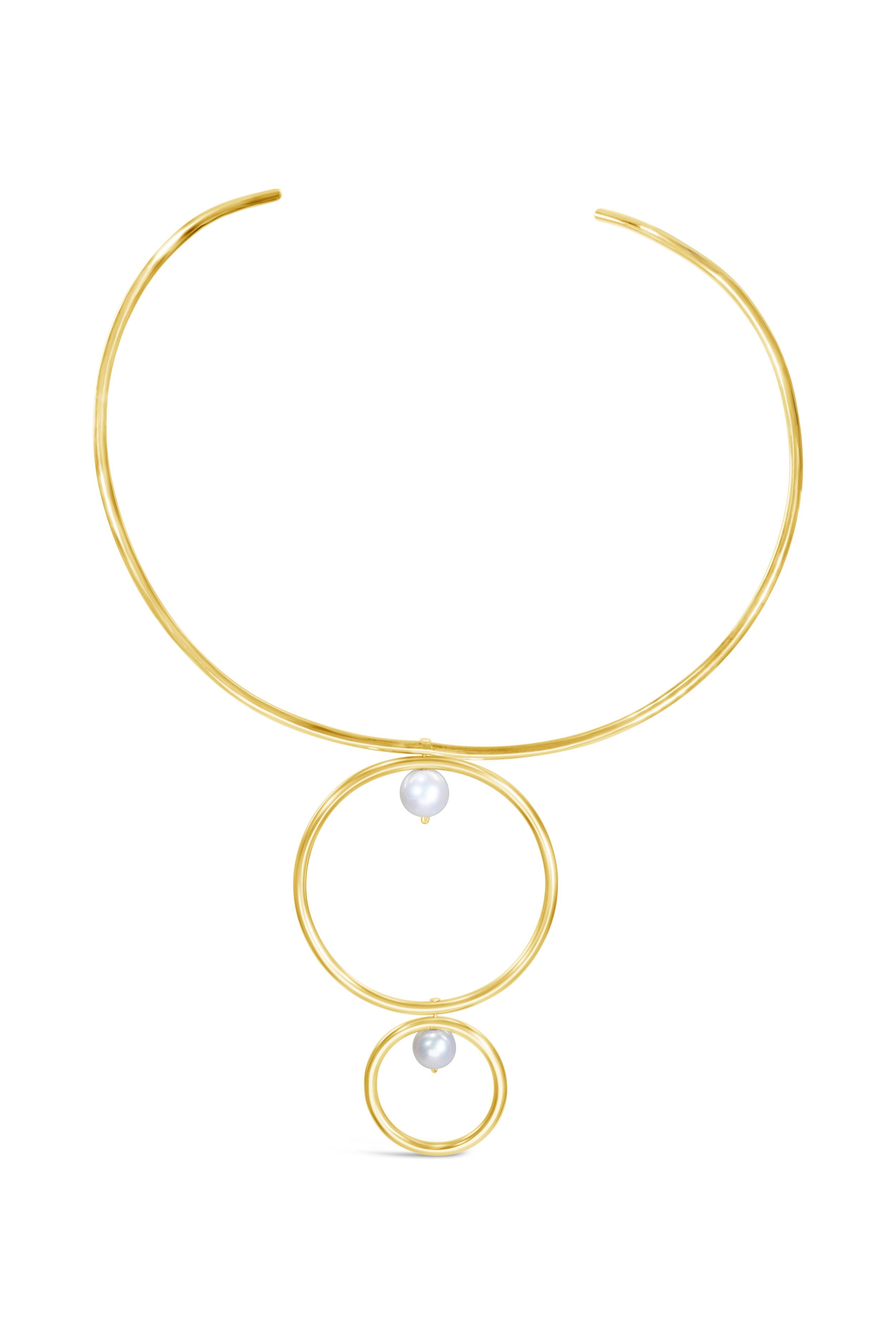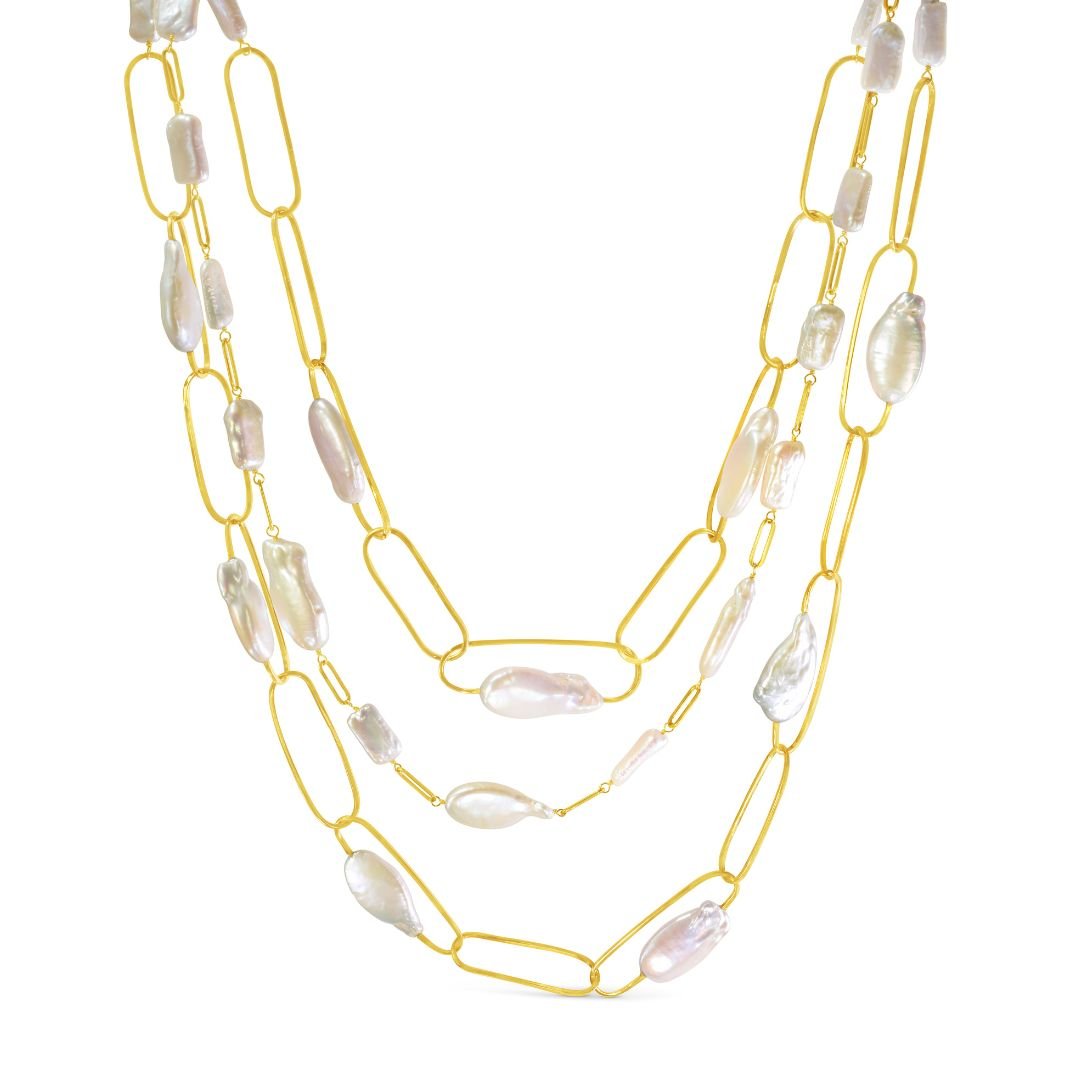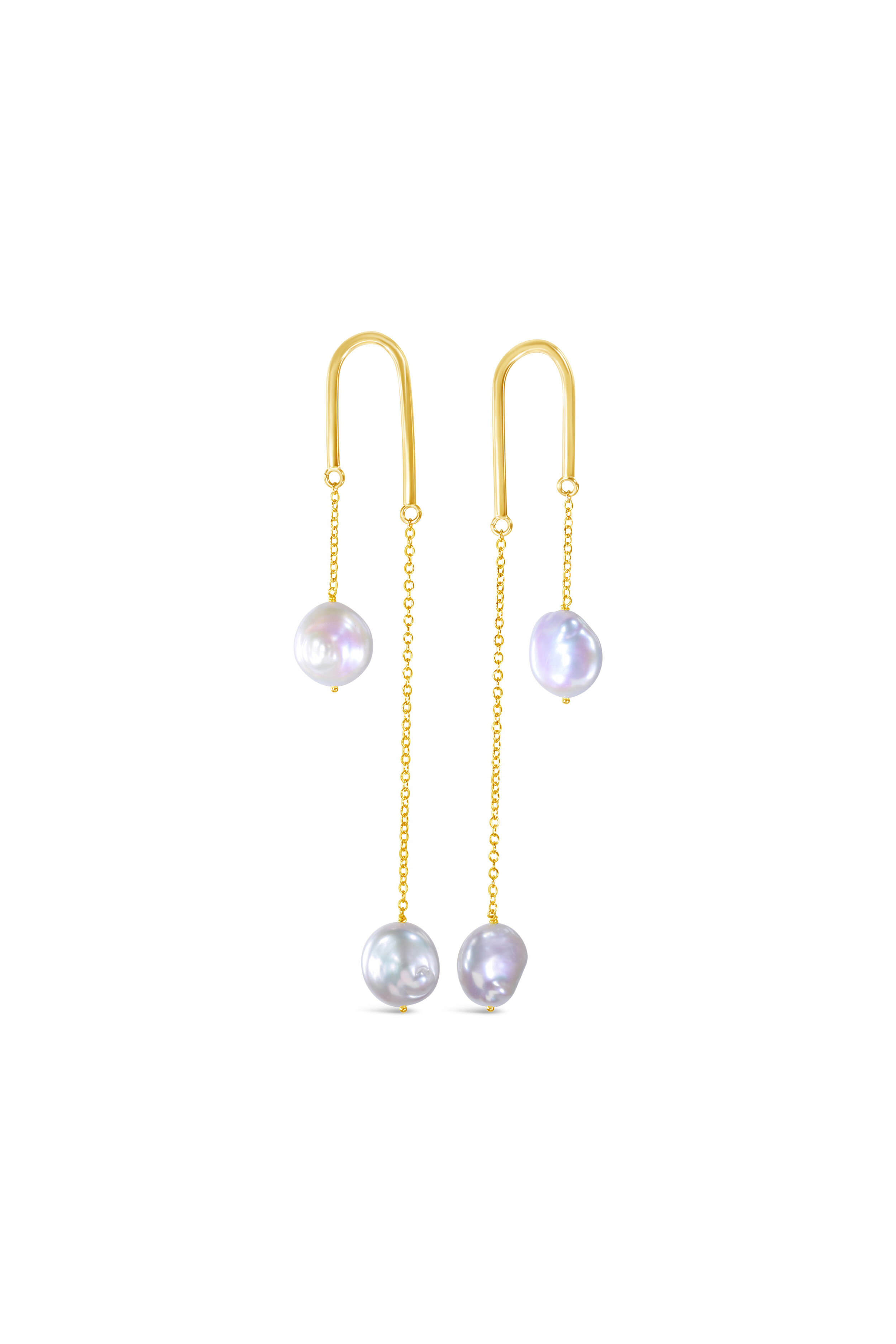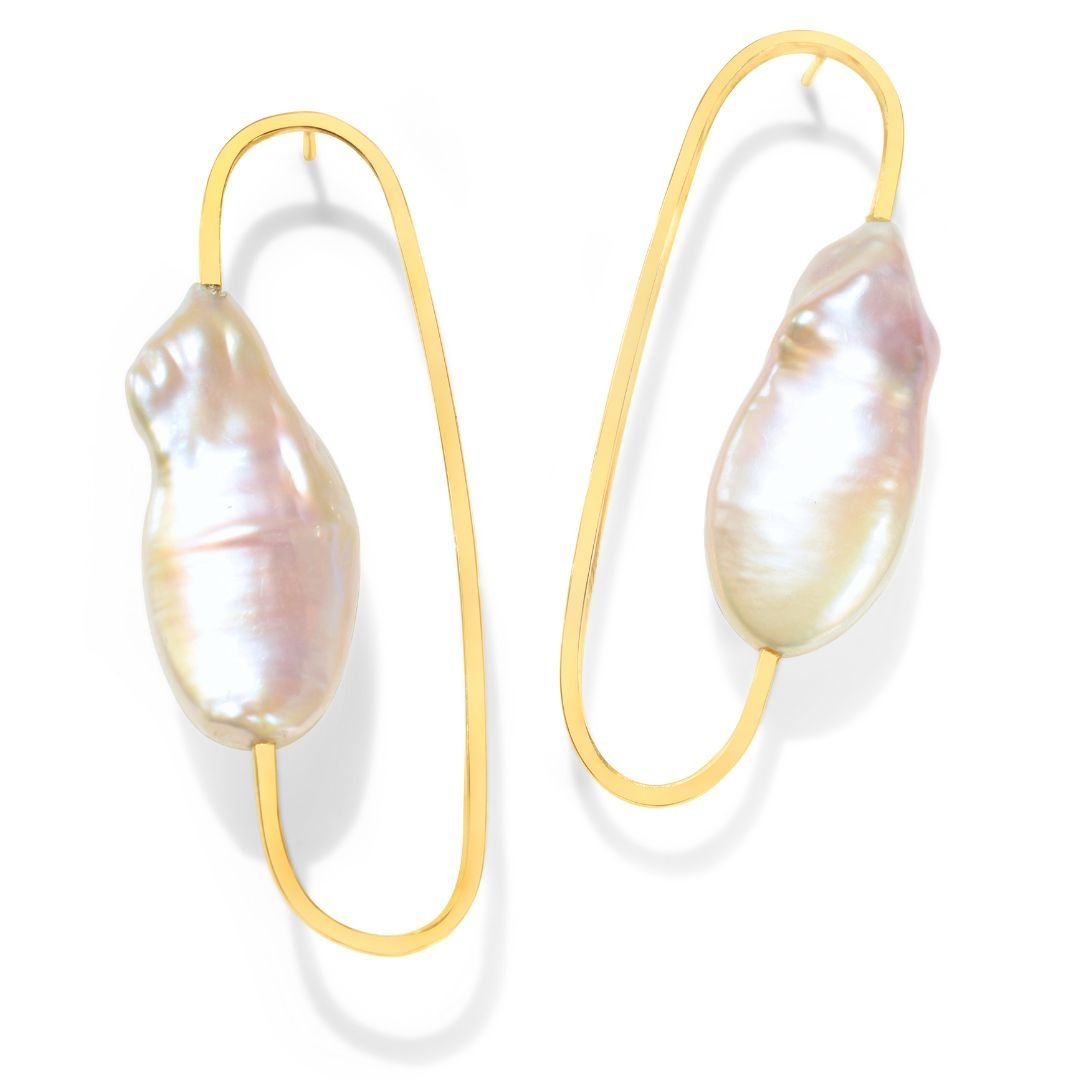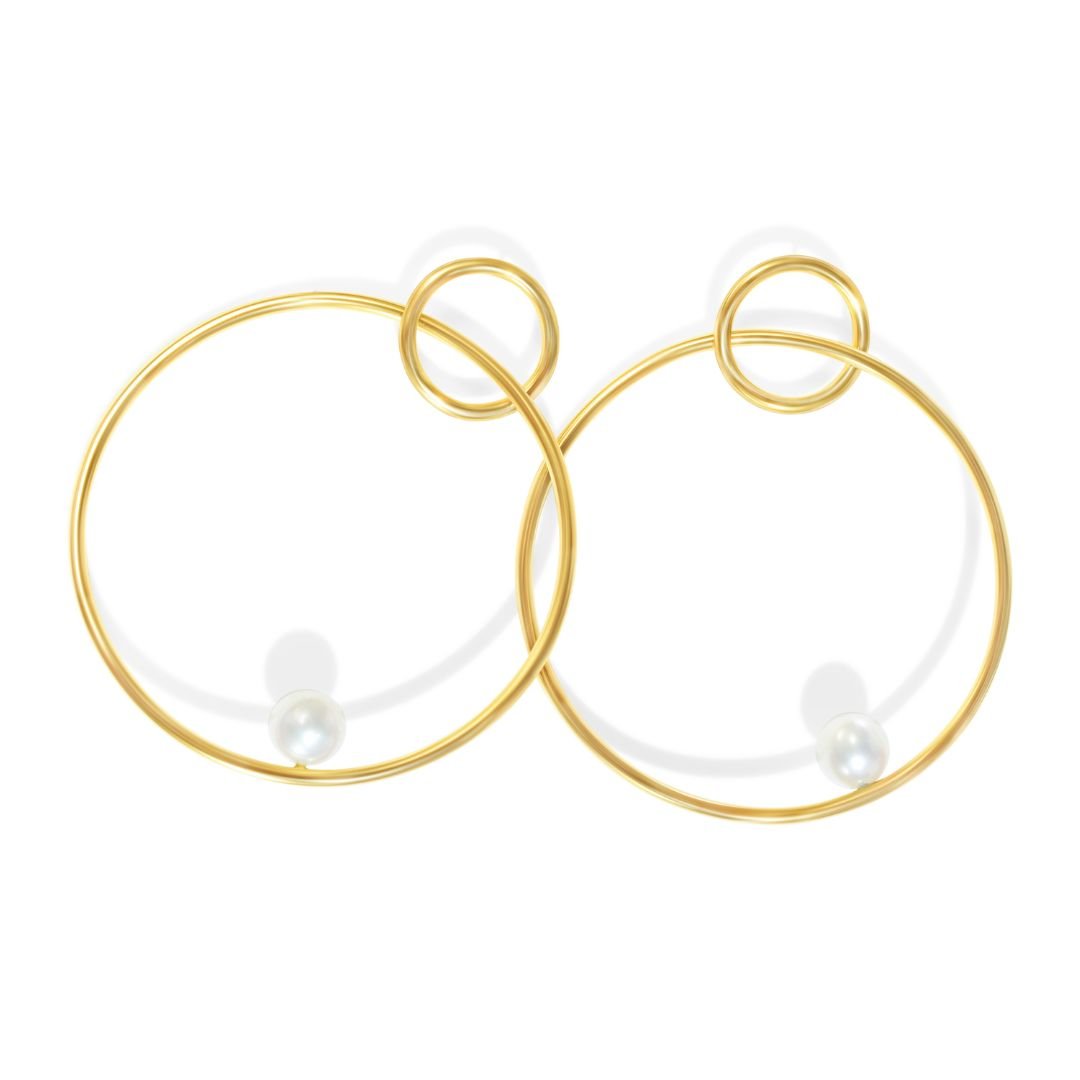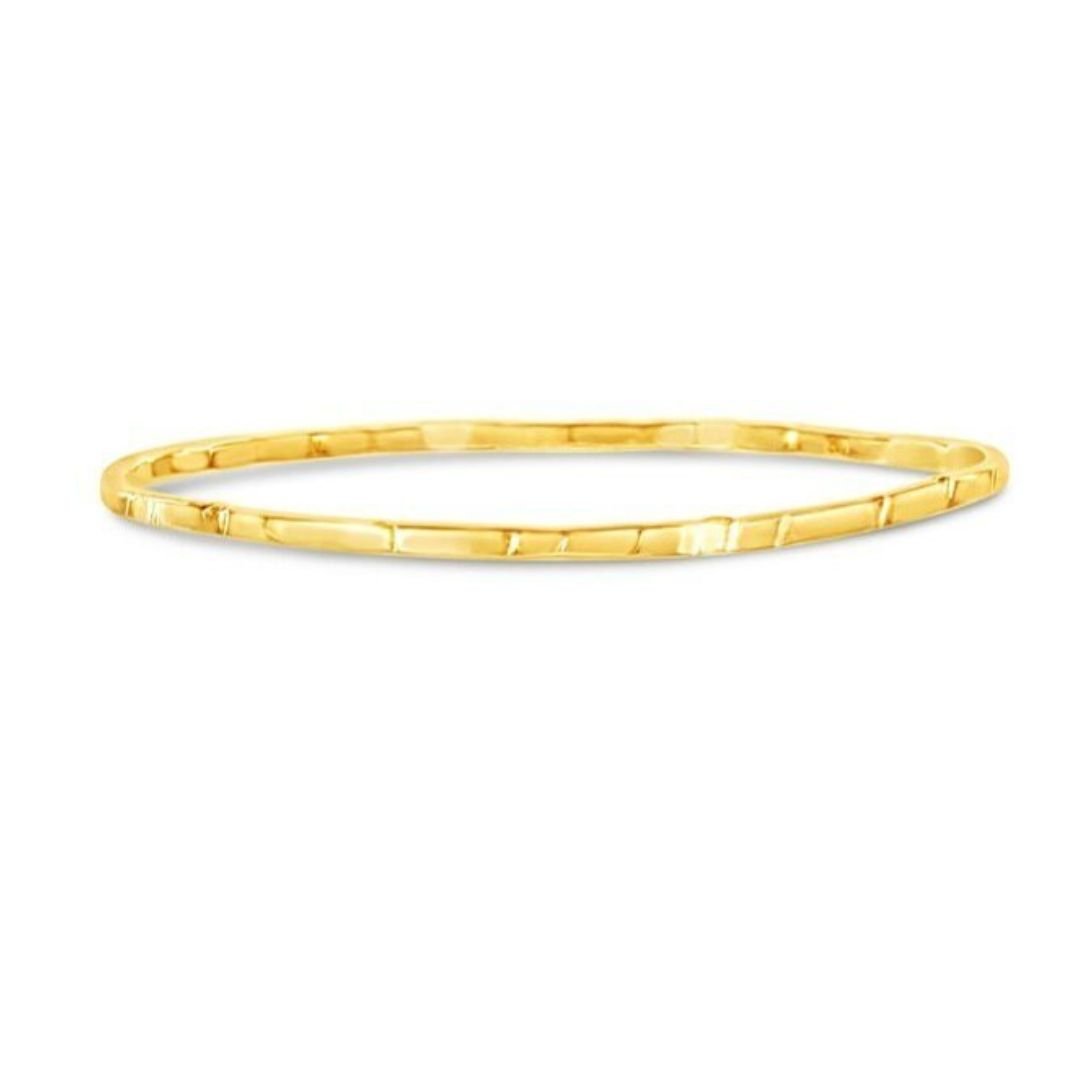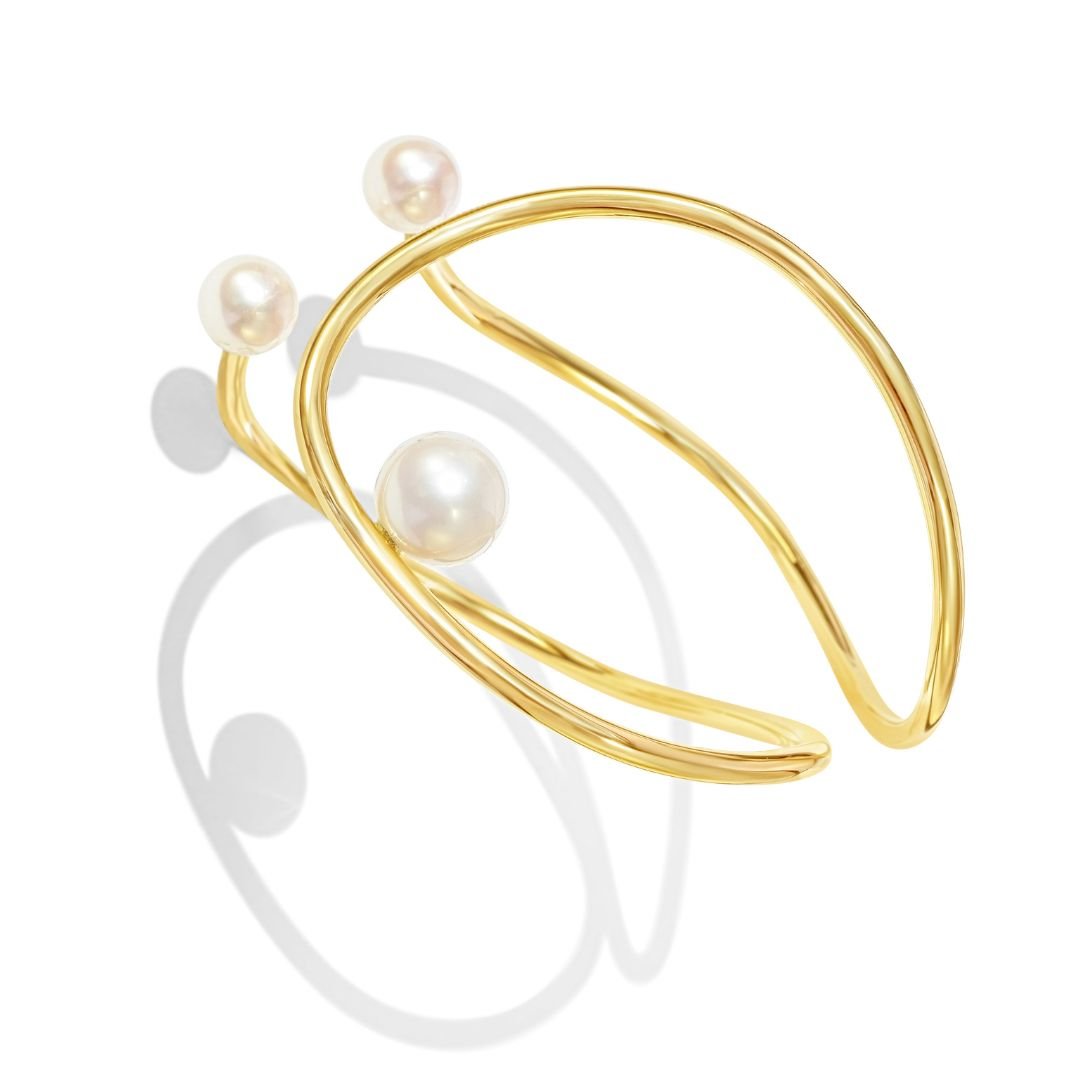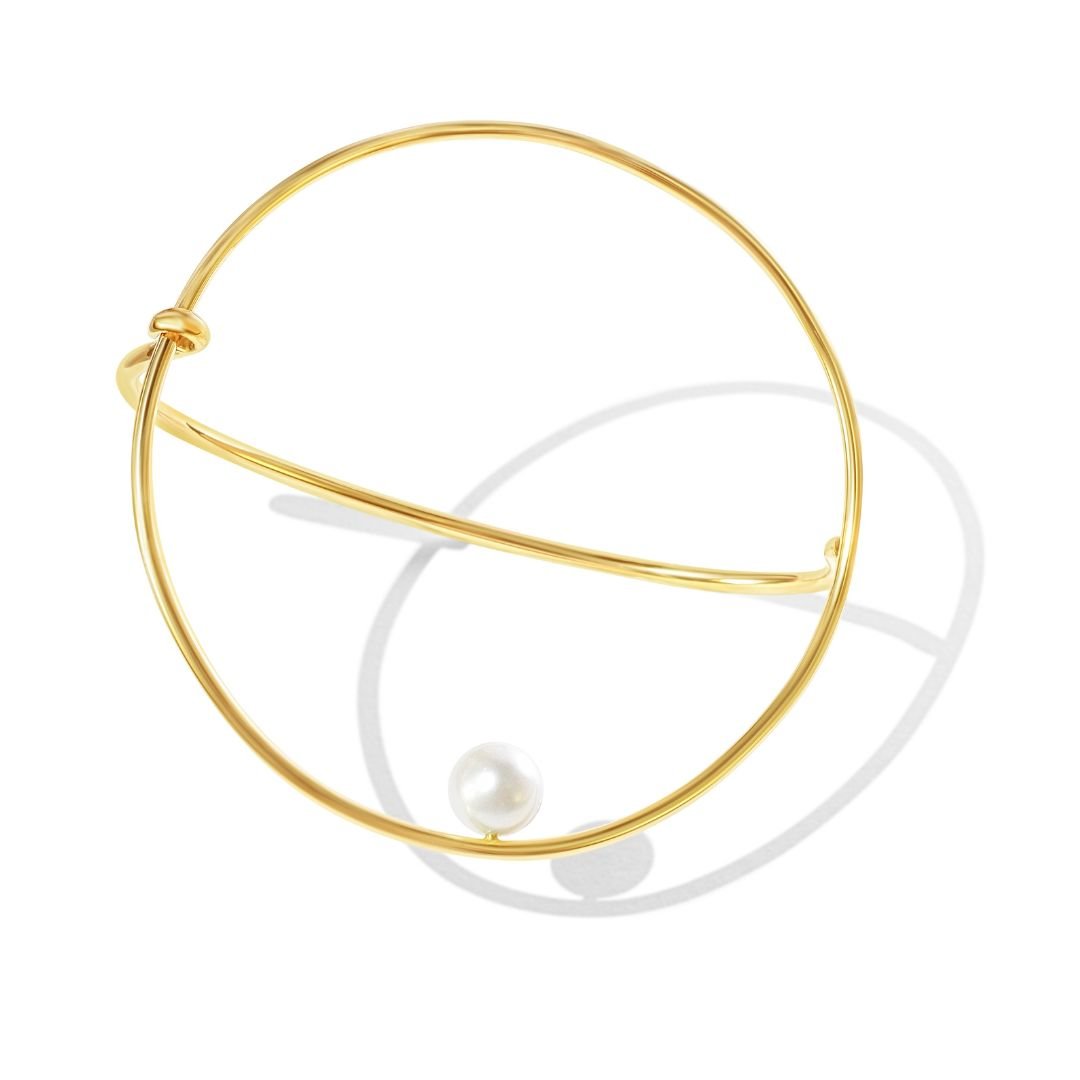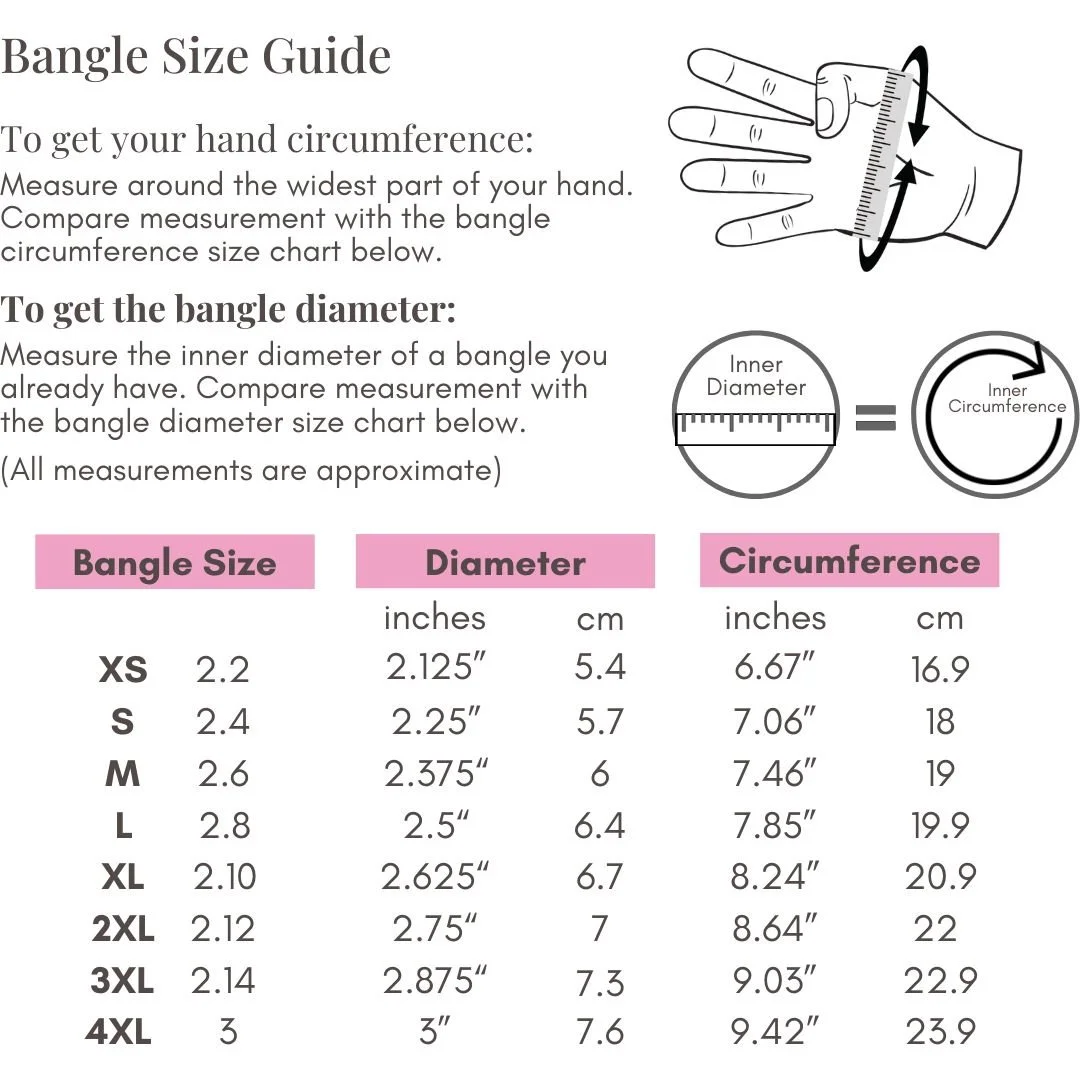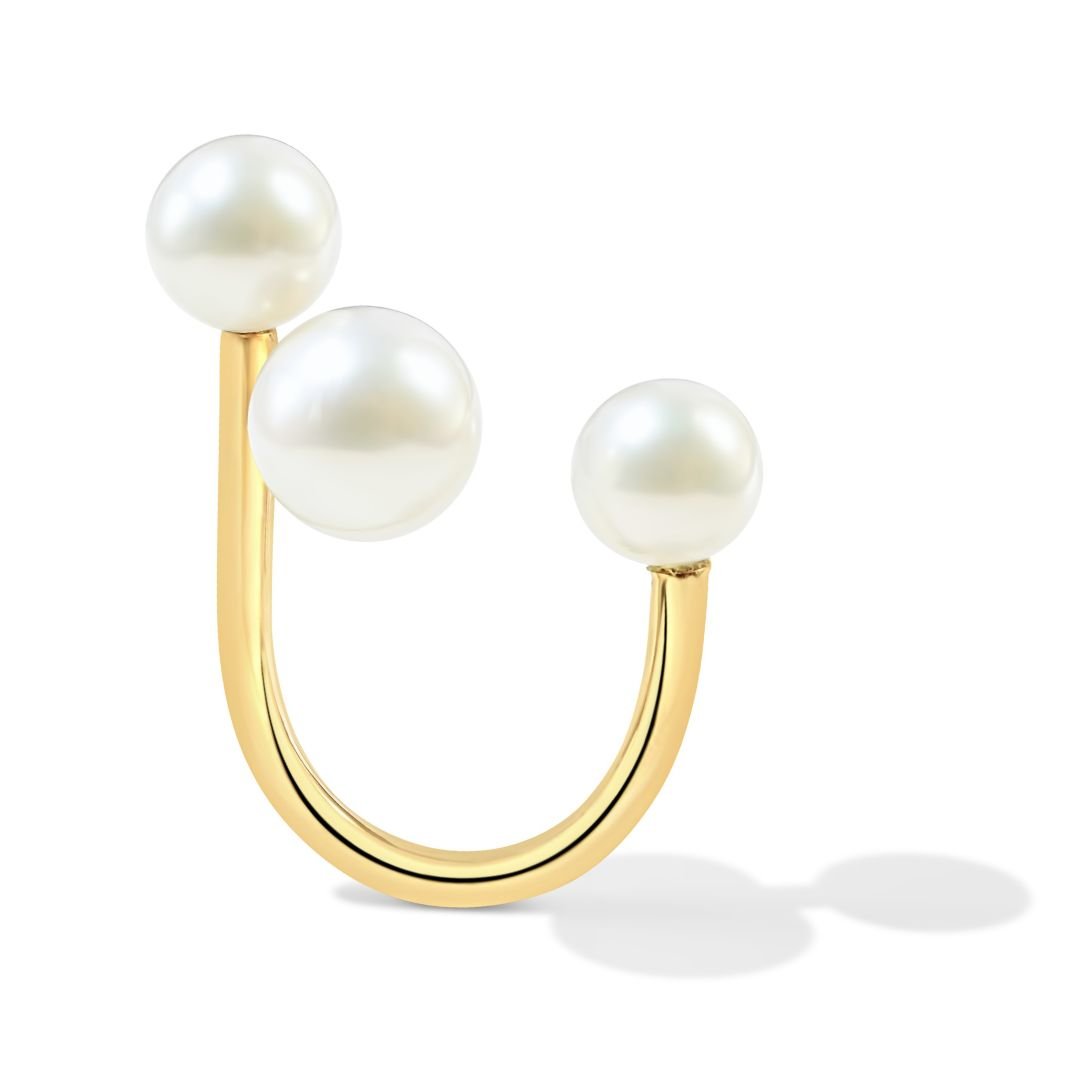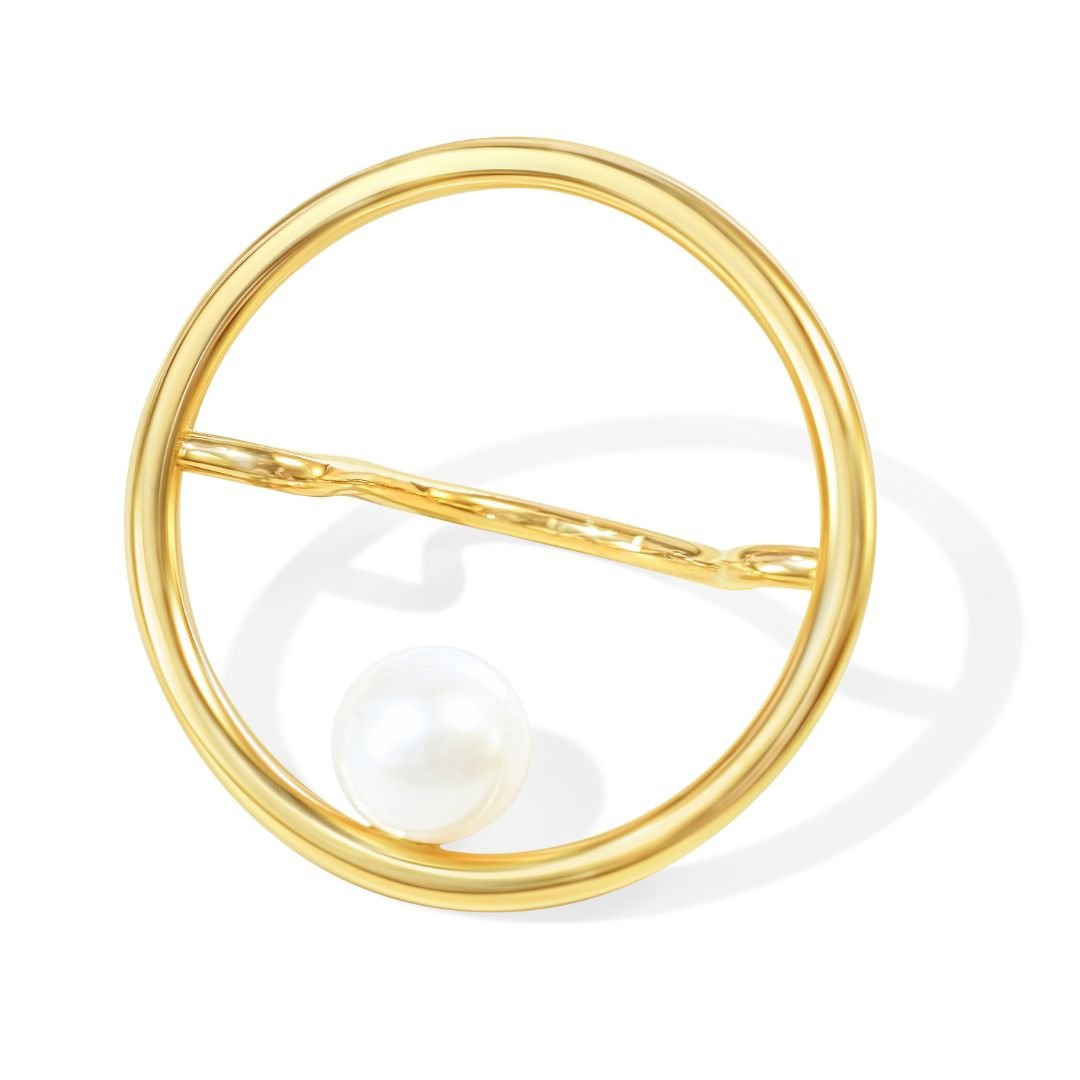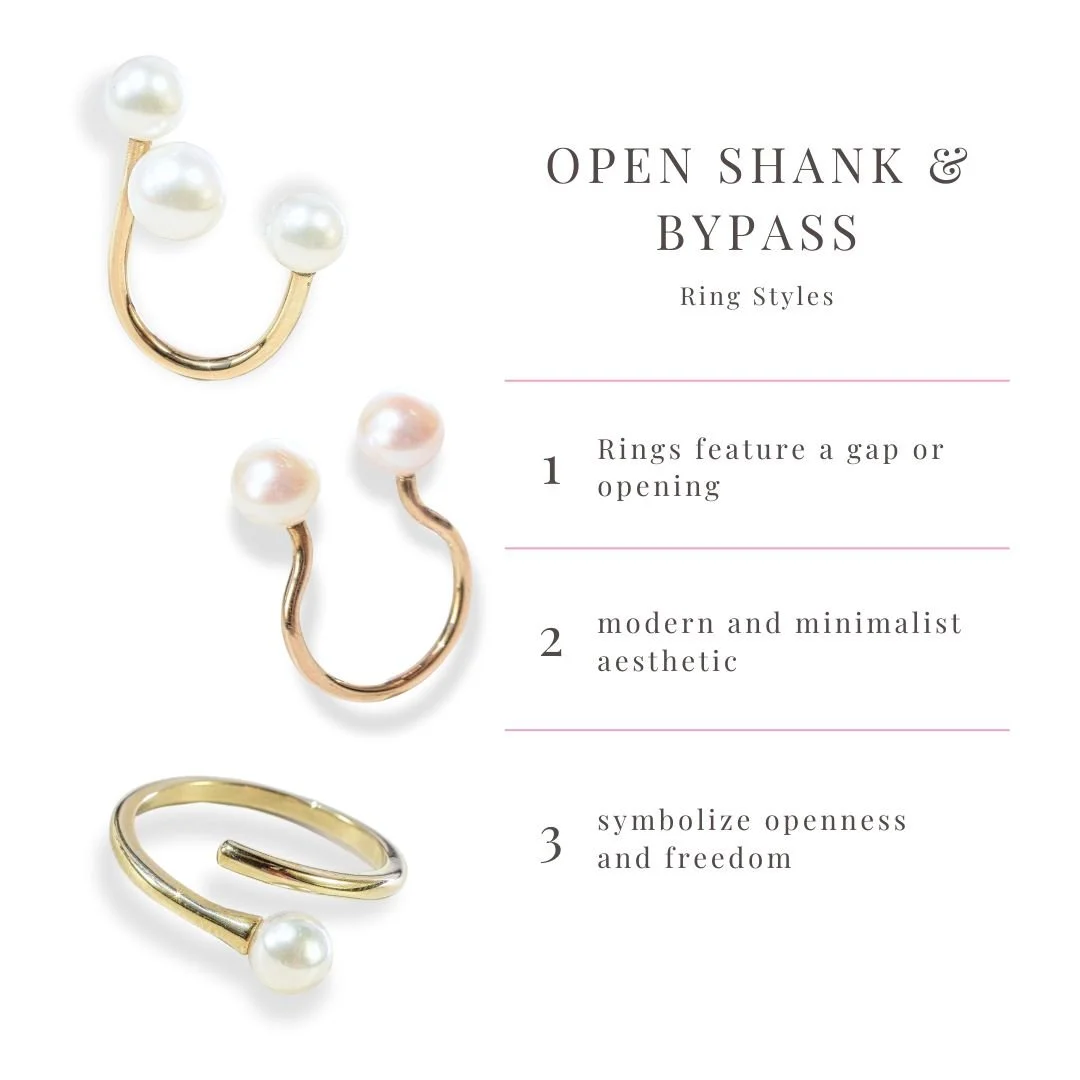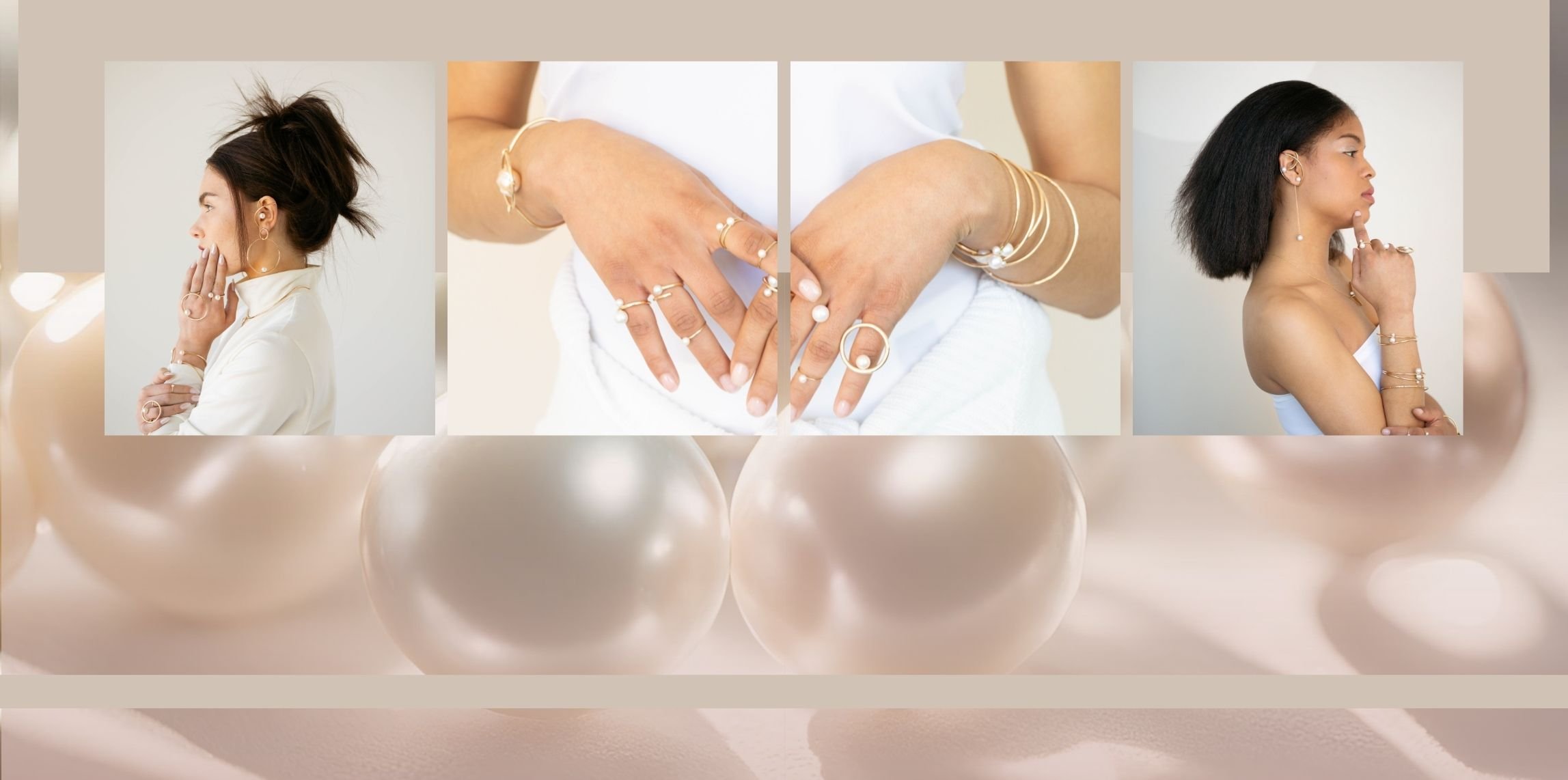
Andrea Li
Pearl Jewelry
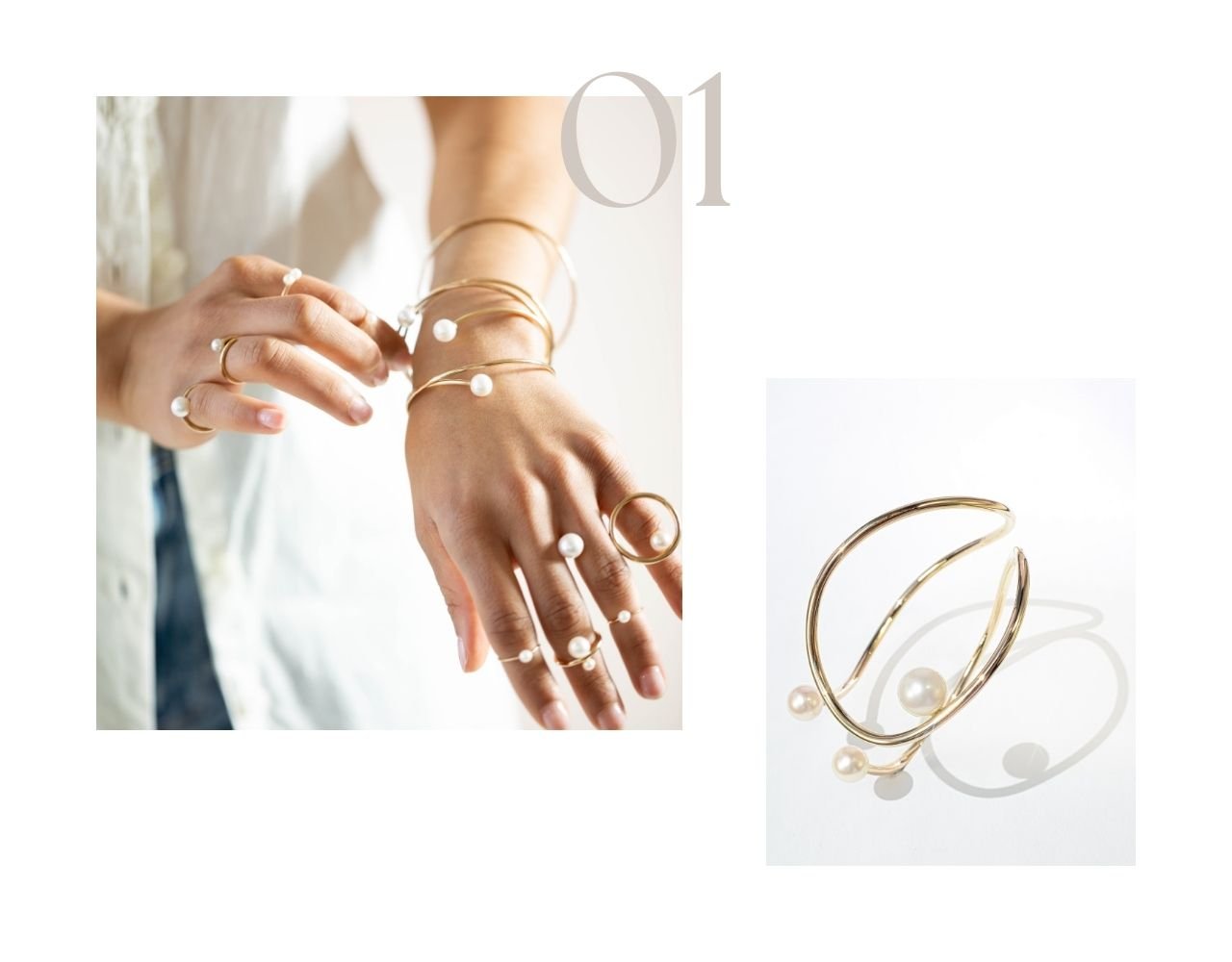
Sculptural Pearl Jewelry
Tailored for your individual style

Handcrafted Pearl Jewelry
for the modern woman to elevate your everyday style
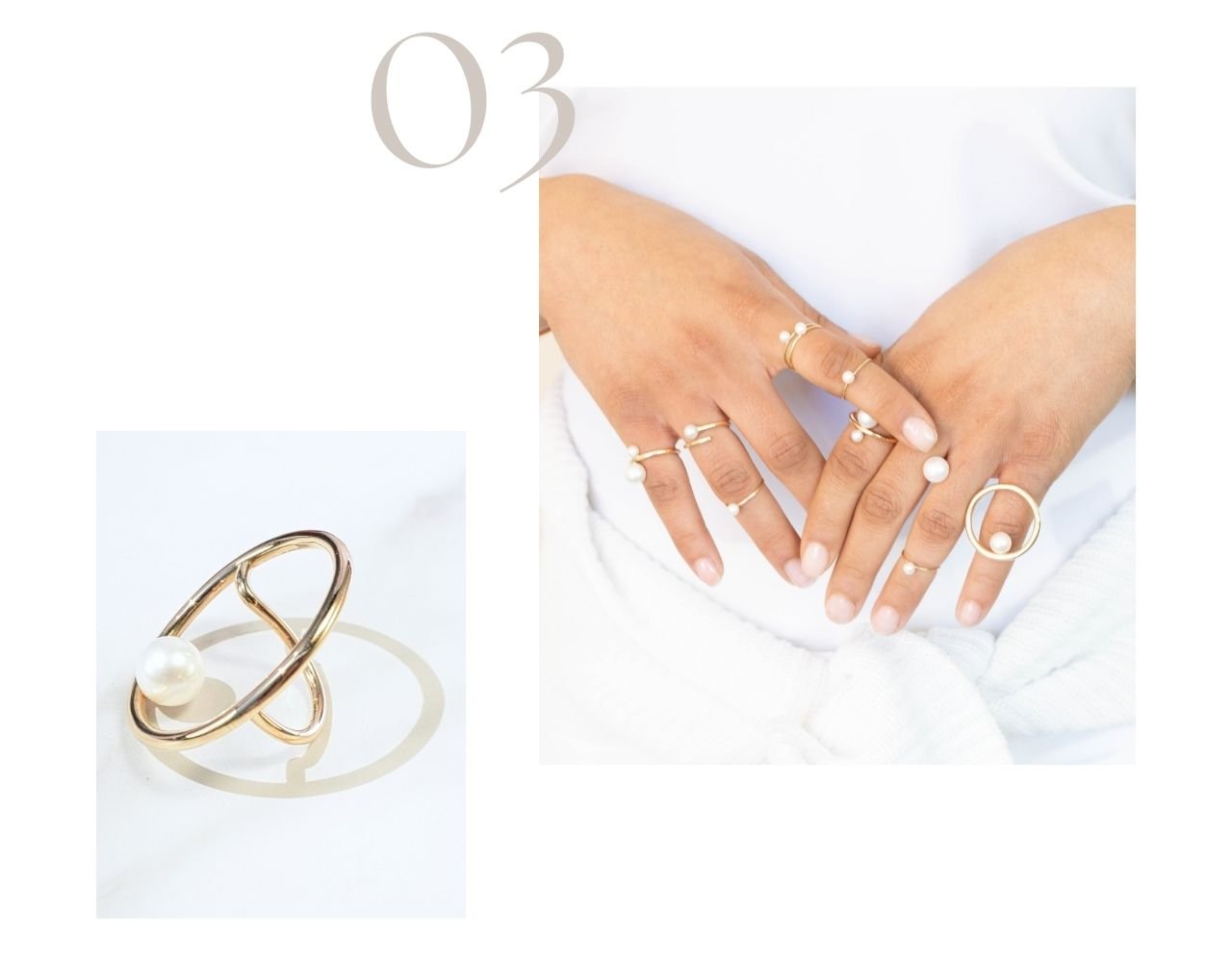
Find Your Dream Pearl Ring

Explore A Fresh Take On Ear Jewelry
The perfect modern pearl ear cuff
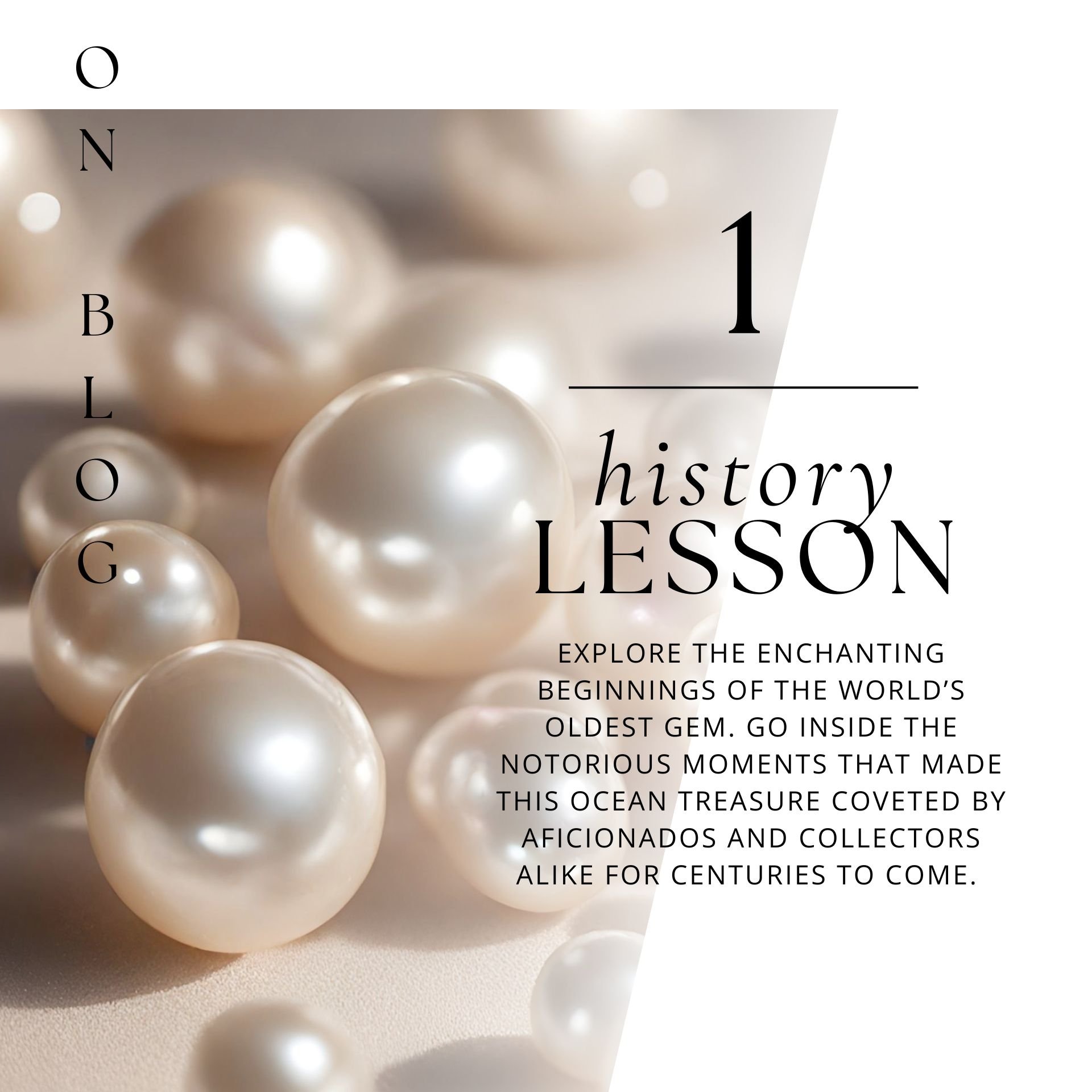
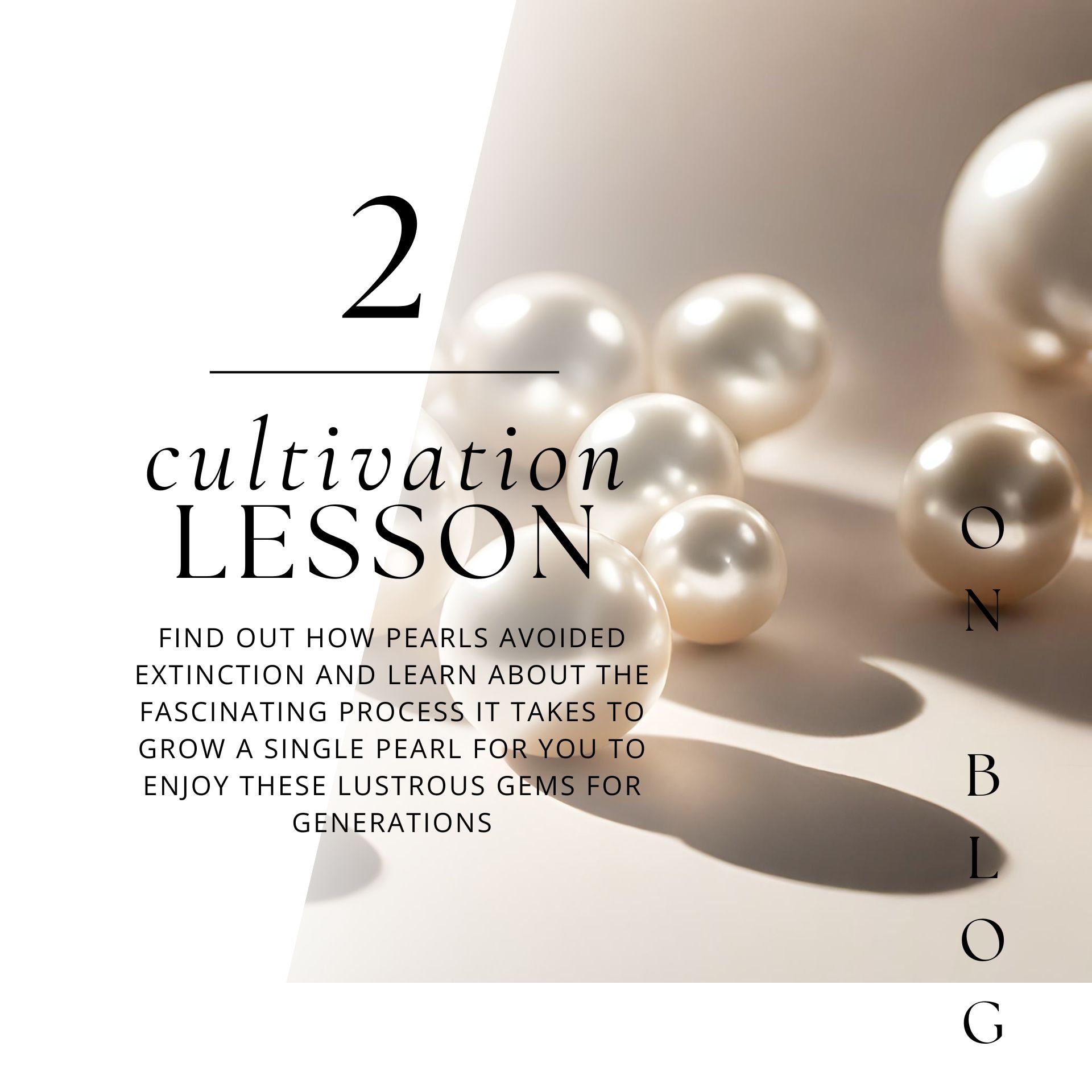
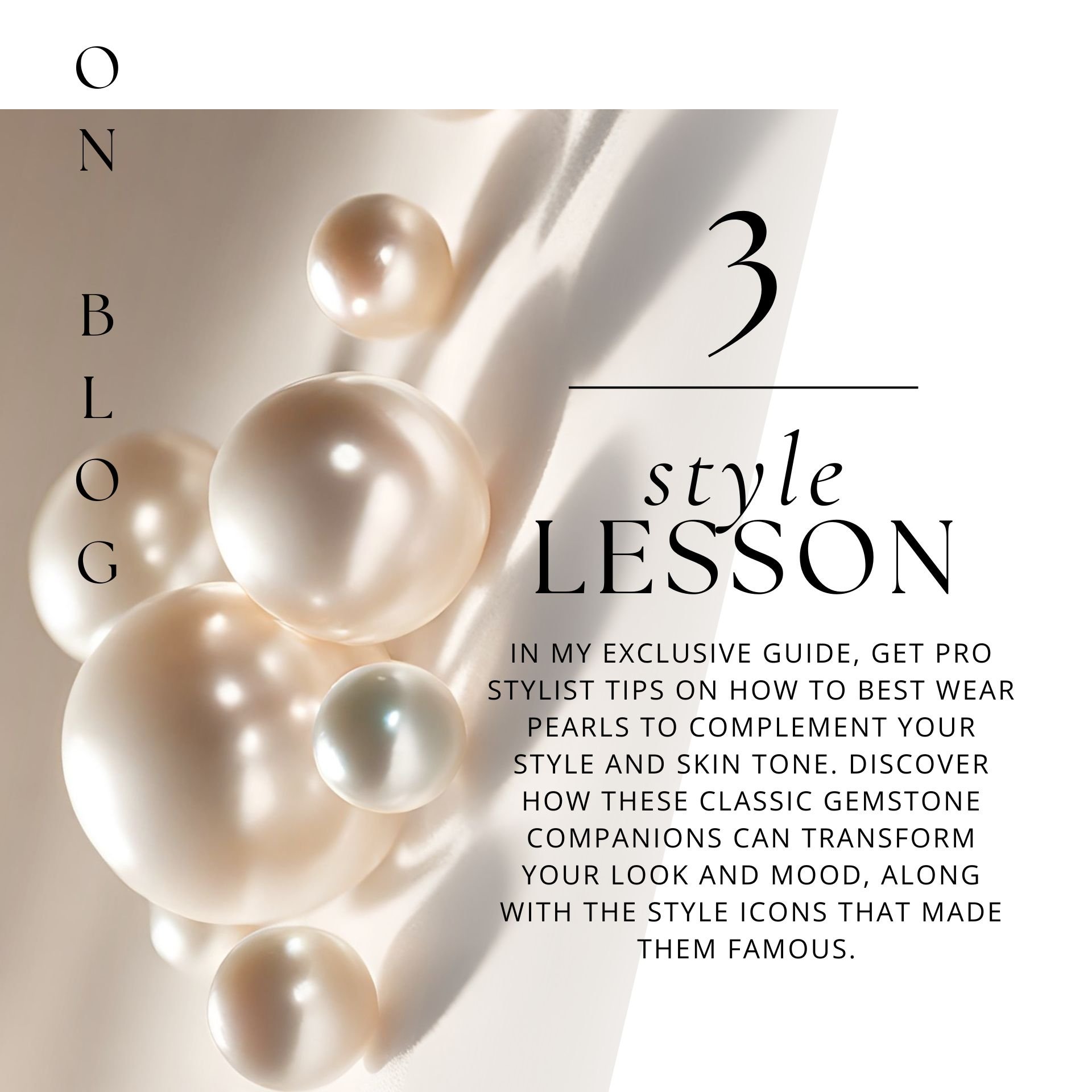
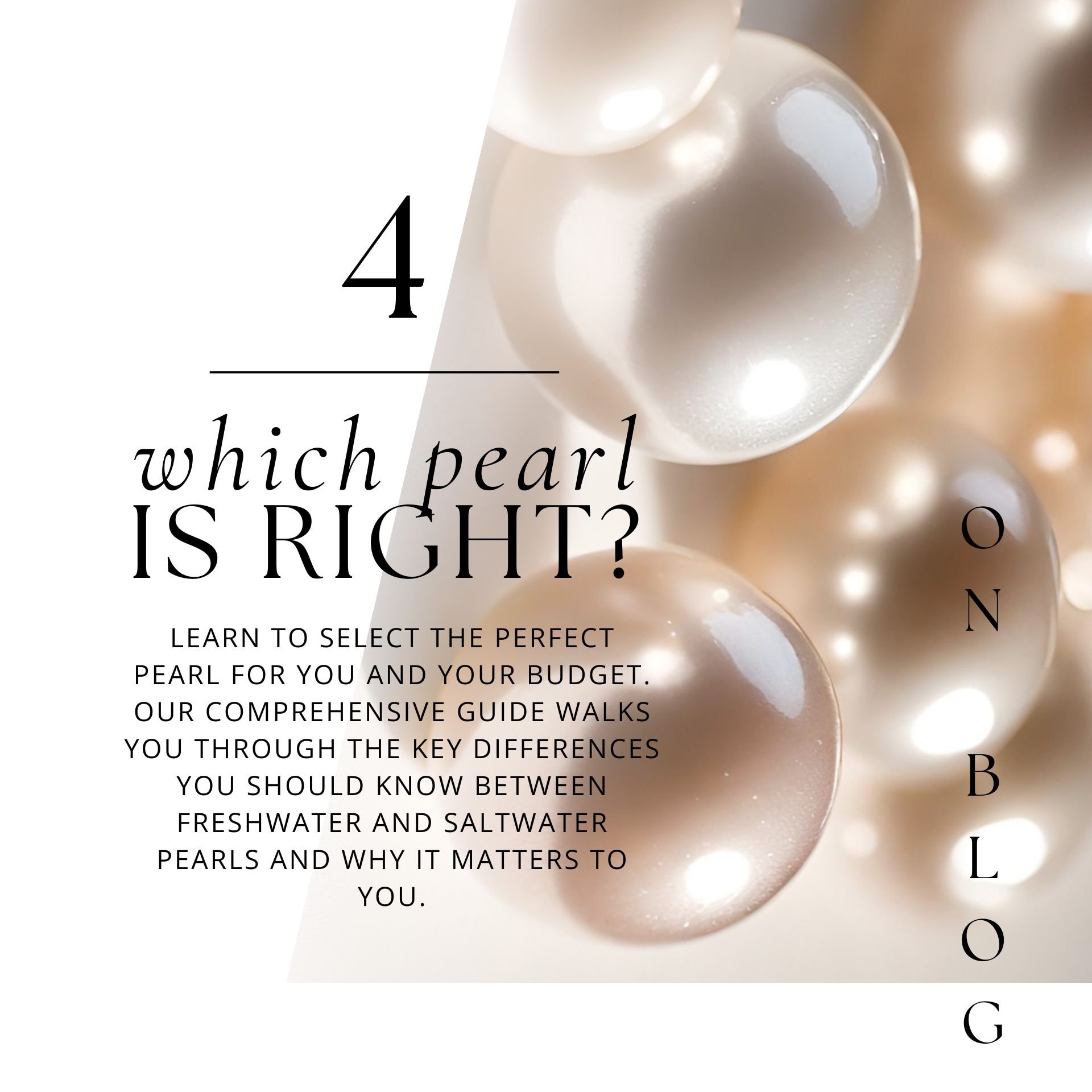
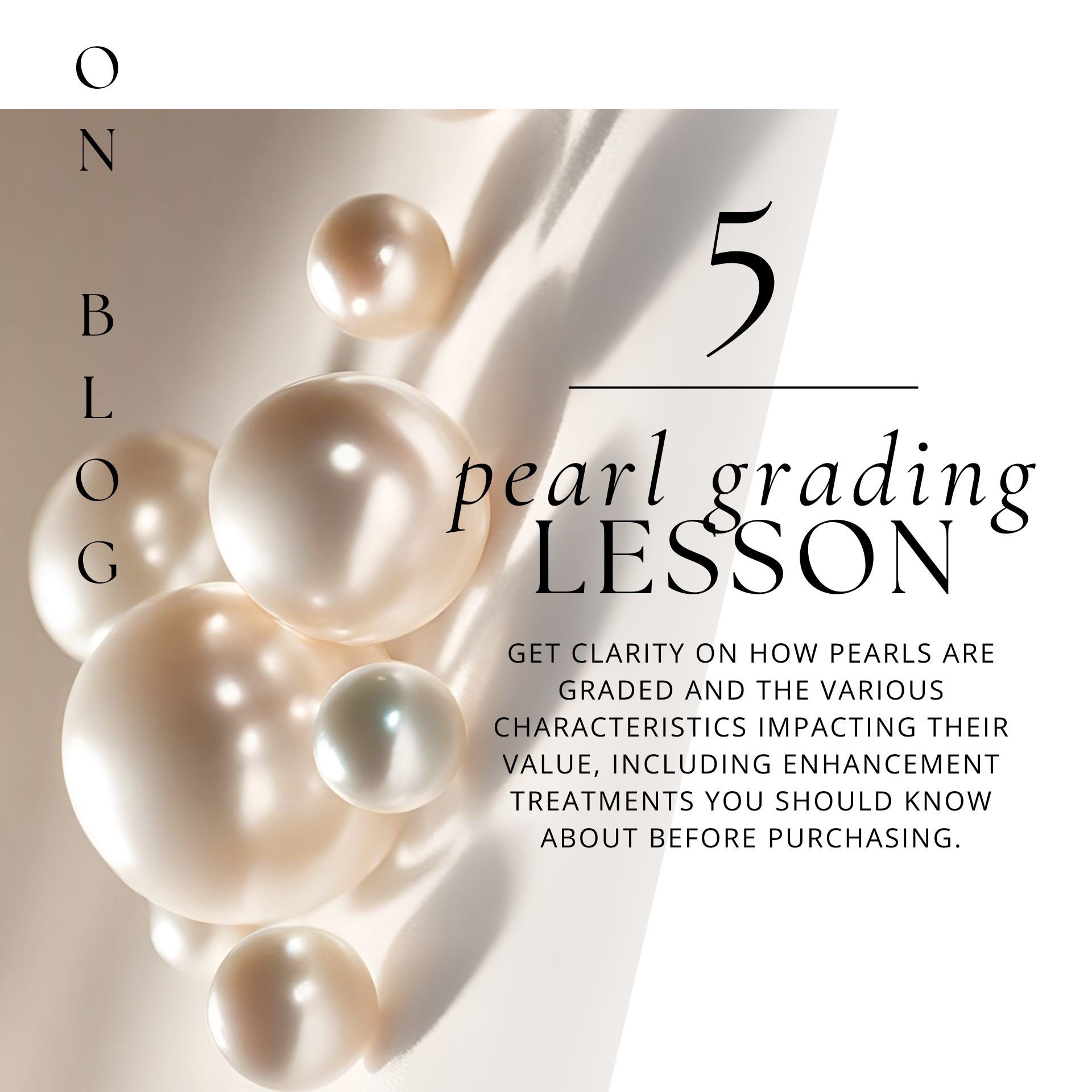

Pearl Guide preview

-
Pearls are timeless treasures, formed naturally by mollusks such as pearl oysters and freshwater mussels. When an irritant, like a grain of sand, enters the mollusk, the creature coats it with layers of nacre—a radiant substance that gives pearls their unmistakable glow.
Over time, this process transforms the irritant into a stunning pearl, creating the natural beauty we see in real pearl jewelry today.
Whether you prefer the modern elegance of contemporary pearl jewelry or the classic appeal of traditional pieces, each pearl tells a story of nature's craftsmanship.
-
Pearls come in a range of types, each offering something unique.
Natural pearls, which form without human intervention, are known to be extinct. Any specimens found would be considered incredibly valuable and rare.
Cultured pearls, on the other hand, are grown with the help of humans but follow the same natural process.
Freshwater pearls, known for their affordability and variety, offer a beautiful and versatile option.
Saltwater pearls—like Akoya, South Sea, and Tahitian pearls—are admired for their luxurious quality.
Whether you lean toward dainty pearl jewelry or the bold statement of baroque pearl jewelry, there’s a type of pearl that will perfectly match your personal style.
-
To keep your pearl jewelry looking its best, it’s important to care for it properly.
Avoid exposing your pearls to harsh chemicals found in perfumes or cosmetics.
Use a soft cloth and wipe them gently to remove oils and dirt after wearing your pearl necklace or pearl ring.
Place your pearl jewelry separately from other pieces to prevent scratches when it comes to storage.
To clean your pearl jewelry, a simple damp cloth, and mild water solution will help maintain their natural luster.
-
Real pearls have a distinct luster and often carry small imperfections that make each one unique.
A quick test to check authenticity is to rub the pearl gently against your tooth. A real pearl will feel slightly gritty, while imitation pearls glide smoothly.
Whether you’re admiring a pearl gold jewelry ring or a choker necklace, knowing you’re wearing genuine pearls adds a sense of specialness to each piece.
-
Absolutely. Cultured pearls are very much real, with one small difference—the formation process is initiated by humans.
Once an irritant is introduced to the mollusk, the natural process of nacre production begins, just as it does with natural pearls.
Whether it’s Akoya pearl jewelry or freshwater pearls, these cultured gems share the same beauty, charm, and elegance as naturally occurring pearls.
-
Freshwater pearls are generally more affordable because freshwater mussels can produce several pearls simultaneously and take less time to develop. They are also farmed in more accessible bodies of water, such as lakes and rivers.
In contrast, saltwater oysters—such as those that produce Akoya or South Sea pearls—typically create only one pearl at a time, making them rarer and more expensive. These pearls are farmed in ocean estuaries and are subject to much harsher and unpredictable environments.
For those seeking unique pearl jewelry that is both stunning and budget-friendly, freshwater pearls are an excellent option.
-
Yes, pearls can be worn daily with a little extra care. These delicate gems are best protected by avoiding exposure to harsh chemicals or extreme environments.
If you wear a pearl necklace daily, consider taking it to a professional jeweler to have it restrung once a year.
Pearls can easily be incorporated into your daily signature looks, both formal and casual. Whether you’re donning gold and pearl jewelry for a wedding or a pearl necklace for a casual evening, pearls always add a touch of timeless elegance.
-
Freshwater Pearls: Generally take about 6-18 months to develop.
The top factors contributing to their growth process are -
Growth Environment: Freshwater pearls are cultivated in mussels living in lakes and rivers.
Nucleation Process: Freshwater pearls are nucleated by implanting a small piece of mantle tissue into the mussel without an additional irritant. This allows the mussel to begin secreting nacre immediately, forming a pearl sac.
Nacre Production: Freshwater pearl nacre layers are typically less dense, allowing for faster accumulation.
Production Capacity: A single freshwater mussel can produce up to 25 or more pearls at once.
Saltwater Pearls: Take 3-5 years or even longer to reach maturity.
The top factors contributing to their growth process are -
Growth Environment: Saltwater pearls are produced by oysters in ocean estuaries.
Nucleation Process: Saltwater pearls are implanted with a piece of mantle tissue and an irritant (usually a bead) into the oyster. The oyster must first coat the bead with nacre before forming a pearl sac, which takes longer.
Nacre Production: Saltwater pearl nacre layers are denser and take longer to form, resulting in a higher luster but slower growth.
Production Capacity: Saltwater oysters typically produce only 1-3 pearls at a time.





